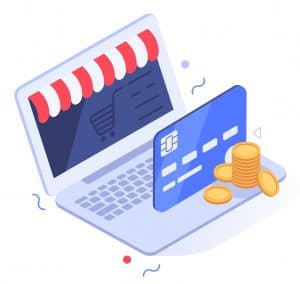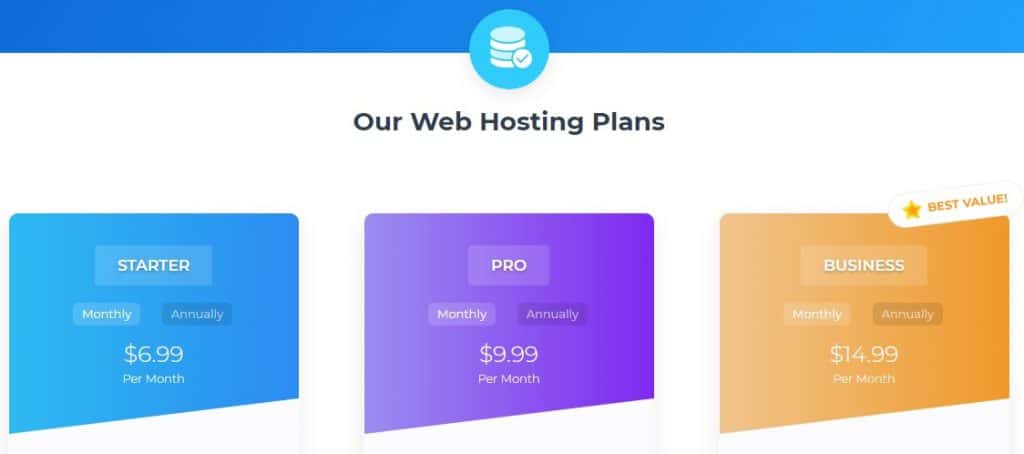A Beginner’s Guide to Getting Paid Online
- By Douglas Moore
- September 14, 2020

Starting your online business isn’t without its challenges. In fact, one of the most intimidating parts of running your own online operation is getting paid. And there are quite a few stages to getting paid, like asking for money, receiving your customer’s payment, and making sure that you’ve gotten paid.
Don’t worry, though – if you’re a beginner, this guide is meant for you. We will take you through the whole process of getting paid online, and make sure you’re still with us every step of the way. We’ll also introduce you to the best online payment methods, which will keep you and your customers happy and secure.
It’s important to invest some time and effort into setting up the payment process. The readier you are for your clients, the smoother your business will run!
An Overview of Our Guide
Before we get started, here’s an overview of what we will cover in this guide:
Part 1: How to ask your customers for money
- Pricing Option 1: Show your fixed prices upfront.
- Pricing Option 2: Offer pricing quotes depending on the project.
- Pricing Option 3: Offer pricing estimates depending on the project.
Part 2: How to accept payment from clients
- Overview of online payment methods.
- Their perks and drawbacks.
- Deciding which payment service to use.
Part 3: Carts and checkout
- Overview of carts and checkout
- Tips for making your payment process more appealing to clients (includes tips on how to avoid cart and checkout abandonment).
Part 4: Receiving the money
- How to make sure you get paid!
Part 1: How to Ask Your Customers for Money
First things first – how do you go about asking people for money? The three main ways you can do this:
- having a set price for your product or service available on your website
- offering customized pricing quotes
- or offering pricing estimates.
Pricing Option 1: Set Prices (Pricing Lists)
Let’s say you’re running a hosting service. Hosting services generally have set prices and pricing lists for each kind of hosting plan. For instance, our web hosting plans include a list of fixed prices depending on the needs of different clients. Take a look:
As you can see, the exact price for each plan is set. When potential clients come to our website, they can see the exact features and benefits offered by each hosting plan, along with their price.
If your business offers the sort of service or product that has fixed prices – like a hairdresser would – then a good option is choosing this sort of pricing model. You can just make a pricing list that offers the details of various products and their prices, and have them readily available on your website.
Should You Use Fixed Prices (Pricing Lists)?
In this model, your customers will be informed upfront, i.e. as soon as they land on your page, how much a certain service or product costs. If the price of your service depends on the specific project’s demands and workload, this method isn’t for you. Check out the next options.
Pricing Option 2: Offer Pricing Quotes Depending on the Project
A pricing quote, pricing quotation, or simply quote, is a fixed price that you can offer to your clients on a case-by-case basis. In this case, rather than having a set price on your web page for a certain product or service, your potential client would be required to ask you for a quote.
How Do Pricing Quotes Work?
Let’s give an example from the world of brick-and-mortar businesses. For instance, you could expect to get a quote from a building firm. You tell them what you need done, and they give you a price based on the work (number of workers) and materials they will need to use to complete your project.
In the world of online businesses, think of a digital marketing agency. Digital marketing agencies usually offer quotes to their potential clients, as the price changes depending on how much work is needed. If they are expected to build a client’s website, maintain their online presence across various social media platforms, and regularly produce content for their blog, they’re likely to charge a higher rate than they would for only one aspect of the work. Plus, the time frame of a project and the nature of the advertising needed (do they want a video, a banner, an image, or an entire campaign) will have an effect on the price.
If you want to give a quote, but want to make sure your clients know that certain aspects of the work are subject to additional charges, be sure to make this clear in the quote document you send to your client.
If you go the pricing quote route, you’d better be well prepared, as giving clients quotes can be tricky. Additionally, keep in mind that you should include a detailed overview in your offer of what each part of the service costs, to account for the price total. This way, your clients will know exactly what they’re paying for, and they’ll also know they’re doing business with a pro!
Should You Use Pricing Quotes?
If you’re running the sort of online business that has varying prices depending on the work that a project requires, one of the options you can consider is offering pricing quotes. Keep in mind, however, that when you offer a quote (unlike an estimate), the price is absolutely fixed. Even if you end up having to do more work than expected, you don’t have the option to charge more. In fact, that would make you look pretty bad and unreliable.
Pricing Option 3: Offer Pricing Estimates Depending on the Project
Pricing quotes and pricing estimates are similar on all accounts but one: a pricing estimate is subject to change. With pricing estimates, you also have to supply a list of your expected costs and a breakdown of the price total. However, if the workload is more than you expected, you can increase the price – given, of course, that you provide a comprehensible and logical clarification.
How Do Pricing Estimates Work?
Again, brick-and-mortar wise, think of engineering projects. It’s hardly ever the case that the initially estimated time, labor, and workforce match the actual demands of the project. Same with building companies – there’s almost always more work to do.
To give you an example of how pricing estimates work in the online world, let’s take programming companies as an example. Programming companies often use pricing estimates. A client comes forward with a project, and the business owners offer a pricing estimate of how much it would potentially cost. However, let’s say that at the same time, the programmers working on the project are keeping logs on how many hours they work each day (by using TMetric, for instance). In the end, if they did more work than what was initially taken into account, the agency can charge more than the estimate. And in this case, they would have incontestable proof of the additional work and thus, raising the price.
Another thing to keep in mind is that if you go the pricing estimate route, you always need to give a good and clear justification of why something is costing more than initially estimated. In the example we gave of a programming agency, the additional work is made quite clear thanks to the accompanying software.
Should You Use Pricing Estimates?
So, if you are running the sort of business where it’s difficult to know exactly how much work a certain project would take, a good idea is opting for a pricing estimate rather than a pricing quote. Keep in mind, however, that some clients may not be too keen on this model, as people often try to get things done spending as little money as possible. After all, it’s difficult to know just how much work something requires if you haven’t done it yourself.
Bottom Line:
To decide on which method to use when asking your clients for money, consider the nature of the product or service you’re offering. If your product/service is straightforward, you can offer a set pricing list. If your service depends on the project in question, you should consider offering quotes or estimates. Go for a quote if you’re confident in your estimation skills. Quotes are also more popular with clients. If you believe that the amount of work or materials that the project requires is unforeseeable, it may be a good idea to opt for pricing estimates.
Part 2: How to Accept Payment from Clients
Today, more than ever before, there’s a broad array of online payment methods available. Your clients can pay online from any smart device – PC, mobile, or tablet. This is quite convenient, as growing numbers of internet users are shopping from their smartphones.
Let’s take a look at the main online payment methods you can choose and also combine to give your potential clients versatile payment options. Although we’ll get into the details a bit later, keep in mind that it’s always a good idea to offer multiple, flexible payment options to increase your chances of making a sale.
Credit Cards and Debit Cards
There are several types of online payments that you can use for your business. As the majority of customers prefer to pay via payment cards, this is the main way of charging online. Payment cards include credit, debit and prepaid cards. To facilitate payment via card, you need to use an online payment processing tool, i.e. payment gateway (like PayPal or Stripe), or an MOR (Merchant of Record) company. We’ll get into both, but first, let’s take a look at the benefits and drawbacks of charging via payment cards.
Pros:
- Customers are happy, you get paid. Payment cards are by far the most convenient method for customers to use. Almost everyone has some sort of payment card, and using it to pay for a good or service online is quite easy. All a client has to do in order to pay using this method is to enter their card details. Plus, card payment makes the process quite fast. Payment processes that last too long will have your client abandoning a full cart at checkout.
- Fast payment. It doesn’t just take little time for the client to pay, it also takes little time for you to get the money. This sort of money transfer directly to your account means that you can get your hands on the money within anywhere from one to about five days (depending on the payment processor/MoR you’re using).
- Leave a good impression. It’s expected that every online business should offer credit card payment, so it’s kind of a given that you should offer it. It will make you look professional. Additionally, when you give customers payment options that work for them, they’re less likely to get frustrated and more likely to trust you.
Cons:
- Payment processing fees. Payment processing companies take transaction fees which are between 1.7% to 3.5% of the transaction value (the percentage will vary based on the card and the processor). Plus, there’s a fee of $0.30 per transaction. The transaction fees will be higher if you work with a Merchant of Record company.
- Payment security. Payment security is a serious concern when it comes to online payments. You need to get a good MoR or payment processor, comply with PCI, and also have an SSL certificate.
Choosing a Payment Processor Tool: PayPal vs. Stripe
The most popular payment processors today are PayPal and Stripe.
Using a good payment processor tool will make your customers feel secure about their purchase. Everyone pretty much already knows and trusts PayPal, but Stripe has been making great strides recently as well. So although it’s still a less known tool than PayPal, Stripe also has a lot to offer.
Let’s go through a quick overview of what each of these PayFacs has to offer, and how you can use them to make sales on your website. And just in case you were wondering about transaction fees – both companies have the same rate of 2.9% of the sale plus $0.30 per transaction. Additionally, both options are quite user-friendly – for you and for clients.
You can check out some full reviews that put Stripe and PayPal head-to-head, to see how their features compare in detail.
PayPal
How to use it:
The easiest way to integrate PayPal Checkout to your customers’ shopping process is using the PayPal Smart Payment Buttons. To add the buttons to your eCommerce site, you basically just need to set up a PayPal account and then copy some code to the website. The Smart Payment buttons make the checkout and payment process quite easy and intuitive for your clients.
Pros:
PayPal ensures the secure transfer of between you and your customer. They accept payments through PayPal and PayPal Credit, as well as payments through credit cards, debit cards, and pay-by-phone options (which have some limitations). PayPal accepts payments from users in over 200 countries worldwide, so it’s a good idea if you’re trying to reach a global market.
PayPal also offers excellent multichannel options, so users can pay through your website, their website, in-store, via phone, or through a smartphone app.
Plus, it’s quite easy to create invoices with PayPal.
Last and certainly not least, PayPal has the edge on Stripe when it comes to getting paid – usually, your money will arrive in your account within one business day! Stripe takes two, on average.
Cons:
One of the biggest drawbacks of using PayPal is that it redirects customers to another page to complete the purchase. We’ll cover in a bit why this isn’t exactly a good thing. But you don’t need to worry about this too much, as users are already familiar with PayPal and trust it.
Another drawback of PayPal is that it has fewer integration options than Stripe – but for most beginners looking for a simple payment process its options are quite sufficient.
Stripe
How to use it:
To use Stripe as a payment method on your site, you just need to create a Stripe account and get Stripe Checkout. Stripe Checkout is quite easy to integrate into your website – the process is similar to that of integrating the PayPal Checkout (Smart Payment) Buttons. The design of the checkout is quite sleek, intuitive, and easy to use. You can always test some of the payment methods offered by Stripe checkout.
Pros:
On their end, Stripe will do everything to ensure the security of your clients – and your – funds. They offer a more simplified fee structure than PayPal and accept more international currencies (125 currencies as opposed to PayPal’s 25) for payment.
Stripe’s checkout process is preferred over PayPal’s on account of not redirecting you to another website. Keeping clients on your website during the entire checkout and payment experience will help maintain awareness of your brand, and it also won’t confuse any users as to who exactly they’re giving their money to. In fact, the design of the Stripe checkout process keeps it quite sleek and simple, and keeps your brand’s name in the loop. (Keep in mind, however – as we’ve already argued – that for some customers seeing PayPal, a popular payment name, can be quite reassuring in itself.)
Additionally, Stripe accepts more payment methods than PayPal. In addition to accepting credit and debit cards, they also accept international cards, Masterpress (by MasterCard), Visa Checkout, AmEx Checkout, WeChat Pay, AliPay, Google Pay, Apple Pay, and more!
Stripe has also done well in the way of multichanneling, consistently working on developing their mobile apps as well as mobile website payments. Indeed, they offer more integration options with third parties than PayPal.
Stripe Billing will allow you to customize invoices, subscriptions, billing, and so on.
Cons:
On the downside, while Stripe accepts more currencies, they only accept sellers from 25 countries.
Additionally, the fact that PayPal is a better-known name than Stripe (and Stripe doesn’t carry their brand to their plugin on your page), it may seem like a less familiar and thus less trusted method to customers.
Choosing a MOR (Merchant of Record)
Digital sales tax is everywhere these days. Europe started taxing digital sales based on where the end user lives. Now everyone from Arizona to Australia does the same. But if you live in California how on earth do you pay sales tax to India for a customer who lives in Mumbai? The simplest way is to use a MOR (Merchant of Record).
A MOR acts as your official retailer for your digital good or service. The MOR charges your customers’ card and they are responsible for paying the sales taxes whether it be to Arizona or Australia.
A MOR is a way to kill two birds with one stone. A MOR will allow you to accept credit cards online and will handle your state and international sales tax obligations. The downside of a MOR? They will usually be charging an extra 2% on top of your usual payment processing fees. So expect payment processing fees of 5% and up.
What are the Responsibilities of an MOR?
Some of the responsibilities that MORs take on include:
- Implementing any applicable local and international sales tax requirements;
- PCI DSS compliance;
- Security of payment funds;
- Applying credit card processing fees;
- Managing refunds and chargebacks.
Our favorite MORs that are popular with onlines businesses are Paddle and Gumroad.
Our Top Recommendations for an MOR:
Gumroad is a favorite amongst creatives, and it’s often used to sell music, films, books, comic books, and even courses – but you can use it for just about anything. It’s also quite popular because it’s incredibly easy to use. For a monthly fee, Gumroad gets real close to PayPal fees, which is pretty amazing.
Paddle is also a great choice, and has low per-transaction charges. They take care of the management for payments, subscription, and billing, along with invoicing, taxes, and fraud detection. However, Paddle does have significant restrictions on what they will and won’t retail for you.
Other Options for an MOR:
If Gumroad or Paddle won’t accommodate your business FastSpring and 2Checkout are more permissive on what they’ll retail for you.
FastSpring offers more features, a flexible API, and a user-friendly self-service portal. It’s often used by software-selling companies. They will provide you with global sales and taxations, all sorts of billing management, and risk prevention (like fraud detection).
2Checkout allows physical goods, but check their plans and pricing carefully – you need to ensure tax compliance is included.
Bottom Line:
Unfortunately, tax authorities around the globe are hungry for extra tax dollars. This has resulted in difficult tax laws, the cost of complying is around 2% of sales. If you have a small online business with few customers in similar locations then you might be able to pay digital sales tax yourself. As soon as you grow and have customers across all of the US states, or have international customers, factor the 2% into your business financials and save yourself the headache – get an MOR.
Part 3: Carts and Checkout

To use a WordPress eCommerce plugin, you just need to add it to your site through the WordPress admin dashboard and customize whatever aspects of it you need to.
Overall, it’s important to maintain a seamless, uncrowded, and smooth design of your website, including the product pages, the cart, and the checkout page.
Carts Overview
Have you noticed the little shopping cart that goes with you wherever you go when you’re shopping on a website like Amazon? Well, you’ll want this for your business, too. Having the cart visible for your clients while they move between different pages on your website will keep them conscious and aware of the shopping process. It will also allow them to make multiple purchases, and work as a reminder of what they’ve selected so far. Plus, it makes you look professional.
Checkout Overview
The checkout page should be as simple to use as possible. You don’t want to distract your clients with too many additional offers – it can put them off from their planned purchase. You also don’t want to redirect them to other pages or overwhelm them with an unnecessarily long, winding payment process. Keep it simple and honest.
Here are some important tips you’ll want to keep in mind when creating the payment process for your website.
Tips for Making Your Payment Process More Appealing to Clients
Now that we’ve gone over the different methods of getting paid online and how to create carts and checkout, let’s go over some important tips on how you can make the payment process more appealing to your clients. This is the part where we help you learn what to do and what not to do in order to avoid dreaded cart and checkout abandonment.
This bit is actually quite important, as it can make or break a sale. Clients are an elusive, feeble sort – so anything that will frustrate them or take more time than absolutely necessary can discourage them from shopping from you. And you obviously don’t want that.
Minimize Causes for Cart Abandonment
There is a list of things that increase the chances of your potential customers abandoning their cart and not buying your product and service. The main causes are unexpected shipping costs, having to create an account, confusing checkout process, and security concerns.
We’ll go over each of these in more detail in the following tips. At this point, the main thing to keep in mind is keeping your prices honest from the get-go. Surprising your clients with additional costs midway or when they’re at the checkout point won’t do you any good. Your clients will feel like they’re being swindled.
Offer a Variety of Payment Methods
Is it practical? Not really. Should you do it? Probably. Studies show that 56% of shoppers want to see a variety of payment options available upon checkout.
Although there may be a single payment method that seems simply ideal for your business, it won’t always be the case for your customers. If you offer your clients several different payment options, they’ll be more satisfied and their user experience will be better. Rather than having your client scramming for a way to pay you if your only payment method isn’t an option for them, you should be ready to give them an alternative.
The best way to go about doing this is finding out what payment method your target audience or customer base is most prone to, and making sure it’s included. For instance, you may wish to include a combination of payments from all major credit cards along with direct bank transfers.
In the end, your flexibility will show your potential clients that you’re doing your best to meet their needs. You’ll reduce their frustration and increase the chances of making a sale.
Allow Customers to Make Purchases without Creating an Account
While this isn’t always applicable, there are some cases where a customer can purchase your product or service without needing to make an account.
Although it’s an old study, it still holds – back in 2012, Smashing Magazine pointed out that customers are less likely to purchase a product that requires them to make an account, simply because they’re afraid of getting flooded with promotional emails. If creating an account is not absolutely necessary for your service, skip it.
Don’t Ask for Too Much Information
It’s a sale, not a date. And even asking too much on a date can decrease your chances of getting another one.
Avoid asking for non-essential information, as people are more prone to leaving checkouts that ask for information that seems unnecessary when purchasing a certain good or service. If you need information that seems non-essential, make sure you explain to your potential client why you need it.
Essentially, keep in mind that customers are looking for a smooth, fast shopping experience. In and out. Everything that stalls them also stalls their willingness to buy from you.
Reassure Clients About Their Security
If potential customers feel like their payment won’t go through securely on your website, they may not wish to enter their personal and banking details at all.
Here are a couple of ways to make your clients comfortable about shopping from your website:
- Avoid redirecting clients. When you redirect a client to another website for payment, they may feel insecure, and like they’re paying another website for your service and product. While this is unavoidable with services like PayPal, we’ve already covered that they’re enough of a brand name not to freak people out, and instead give them reassurance.
- Make sure your website has an SSL certificate. This will show your clients that you have an actual secure connection that encrypts their banking data.
- Comply with PCI SSC. This is covered by payment card companies.
- Make sure your customers know all this. You can display your security standards in the form of a footnote or badges, so your customers know their money is safe on your site.
Minimize Distractions
Your checkout page is the last step of the sales process. It’s where people go to pay, i.e. give you money. The reason we’re here; the reason you’re here. The sole, absolute, and definitive objective of this page is to make that sale, to sell that cart of products and services that your client has finally decided to buy.
So why on earth would you help your client leave it without buying from you first? A lot of web owners make the mistake of adding content to checkout pages in hopes of incentivizing clients to buy more stuff. More often than not, it has the opposite effect.
Basically, what you don’t want on your checkout page are more advertisements or links to other parts of your page. Crowding this sort of stuff is basically creating distractions out of thin air, and decreasing your chances of making that sale.
Bottom Line:
Keep the design smooth and the checkout process simple. Having a shopping cart visible throughout your website for your client is always handy! Don’t ask for more information than you actually need, and absolutely avoid forcing your clients to create unnecessary accounts for purchases. Lastly – make sure your clients know that their money will be handled securely.
Part 4: Receiving the Money

Usually, these companies will notify you with a message when a transfer has been initiated, and again when the transfer has been completed. You can check your account in one to several business days (again, depending on the method of payment and firm in question). You can also check right after you’ve received a message telling you that the transfer is complete to make sure that the money’s made its way successfully to your account.
With PayPal, for instance, you’ll have the option of choosing whether you want the received money to go to your PayPal account or be transferred to your bank account.
Bottom Line:
When you’re using any of the online upfront-payment methods we’ve discussed, you won’t really need to worry about not getting paid. You can easily check whether and when you’ve received the money through your payment gateway, MoR, or bank account.
A Few Words Before You Go…
Hopefully, our beginner’s guide to getting paid online will be a helpful resource as you’re launching your new online venture. The unknown always seems scary, but shedding some light on the workings of any process at least makes it seem a bit less intimidating. The same goes for getting paid online – yes, there’s work to do, but no, it’s not rocket science.
To reiterate, it’s important to pay attention to the information we’ve shared here as you’re crafting your online payment process. It will make the whole experience as smooth as possible for you and your clients. For you, it will minimize any potential misunderstandings, frustrations, and setbacks that you’d face as you’re getting things started. For your clients, it will keep them happy and interested in what you’re selling.
View Related Articles

What Is an A Record?
An A record holds the most essential information about a domain: it contains the IP address associated with that domain. In other words, an A record has the instructions which connect the address of a computer through its hostname. The “A” in this type of record stands for address because it discloses the requested IP address.

What Is a Web Address?
If you’ve used a web browser such as Google Chrome or Firefox before, you’ve likely come across a web address. Also known as a URL (a Universal Resource Locator), they’re generally located in the search bar across the top of the browser page.

All About the .art Domain Extension
Are you one of the creative souls that make our life picturesque with their beautiful art? Well then, do we have a treat for you! We are talking about the .art domain, aimed at artists – and also at their art works. Is registering a .art domain for you, your business, or your artwork something that you should do? We’ll help you decide.

